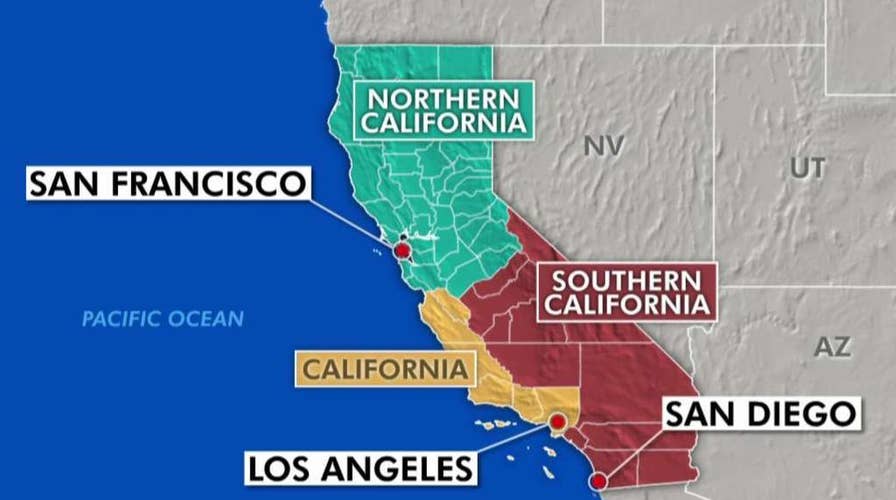'Cal-3' plan would separate California into three states
Plan to break California into three states makes it onto ballot; Trace Gallagher explains what the plan would mean for the state and the reaction it is receiving.
The sponsor of the "Cal 3" initiative to split California into three states asked the state's Supreme Court on Friday to dismiss a lawsuit calling for the proposal to be pulled from the November ballot.
Tim Draper, a venture capitalist who spent more than $1.7 million supporting the initiative, told the court in a letter that there’s not enough time to properly consider the legal challenge to his effort.

Venture capitalist Tim Draper is the sponsor of the "Cal 3" initiative. (Fox Business)
He said he wasn't properly served with the lawsuit, giving him less time to respond.
"I have been given just a day or two to respond to a complex, multi-faceted attack on my Constitutional right to initiative," Draper wrote. "This Court's long history of jealously guarding the exercise of initiative power should not be cavalierly disregarded now, especially on such a truncated timetable."
OPPONENTS OF PROPOSED CALIFORNIA BREAKUP SUE TO PULL IT OFF BALLOT
The Planning and Conservation League, an environmental group, filed the lawsuit Monday, arguing that Draper's plan exceeds the scope of an initiative because it would drastically alter California's government and constitutional framework.
“The dislocation and the disruption that would be caused by something as great as this just can’t be understated,” said Carlyle Hall, a lawyer working on the lawsuit. “This will not make things better.”
“The dislocation and the disruption that would be caused by something as great as this just can’t be understated. This will not make things better.”
The initiative could harm the environment if California’s strong environmental protections are scrapped and replaced with something weaker, which could happen if the state were split, Hall said.
Draper argued the "Cal 3" measure doesn't go beyond what can be accomplished in an initiative. If passed by voters, it would be only the first step toward dividing the state, he said.
The Cal 3 initiative would break the state into Northern California, California and Southern California.
Passing at the ballot box is just the first hurdle.
The measure then directs the governor to ask the U.S. Congress for the ultimate approval — likely a tall order.
If Congress were to give a green light, it would then be up the state's Legislature to determine exactly how the split would happen, including how the state's debts would be divided.
Each of the three states would determine their own governance structure.
Supporters of dividing California argue the nation's most populous state has become ungovernable because of its size, wealth disparities and geographic diversity.
CALIFORNIA 'THREE STATES' PLAN OK'D FOR NOVEMBER BALLOT
Meanwhile, Michael Salerno, a law professor at the University of California, Hastings, described the proposal as having profound ramifications if approved.
“It would not surprise me if the court took this off the ballot,” he said.
Although California as it exists today is heavily Democratic, the newly proposed Southern California might not be. Democrats have only a slim registration advantage over Republicans in that region.
The Associated Press contributed to this report.

























